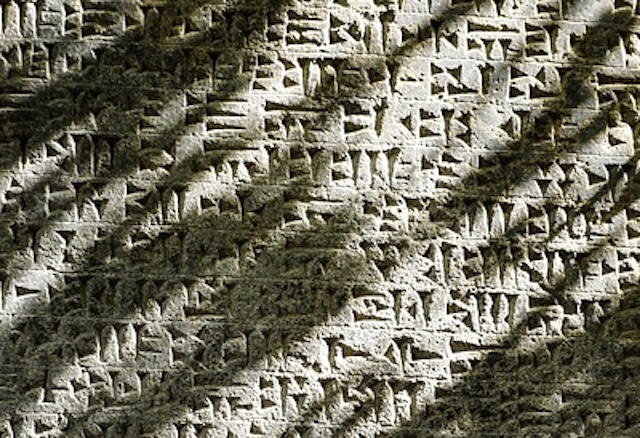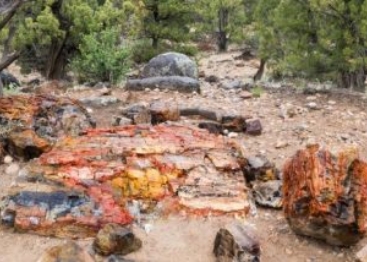10 Mind-Blowing Facts About the Bronze Age and Its Innovations
The Bronze Age wasn’t just some dusty chapter in a history book—it was a game-changing era where humanity took its first real steps toward the modern world. Stretching from around 5500 BC to 650 BC, this period saw mind-blowing innovations that still echo today. Think about it: while we’re glued to smartphones, people back then were figuring out how to smelt metal, build cities, and even lay the foundations of writing systems.
Sure, by today’s standards, life back then might seem primitive—no electricity, no internet, not even a proper pizza delivery. But don’t let that fool you. This was the time when early civilizations went from small farming villages to sprawling empires. The wheel? Invented. Trade networks? Flourishing. Laws and governments? Taking shape.
And here’s the wild part—some of their creations were so advanced, they’d make you do a double-take. Take the Nebra Sky Disk, for example. This ancient star map, made around 1600 BC, proves they were already studying the cosmos long before telescopes existed. Or consider how the Minoans built multi-story palaces with plumbing while much of Europe was still in huts.
The Bronze Age wasn’t just a slow march toward progress—it was a chaotic, creative explosion. Wars, trade, art, and technology all colliding in ways that set the stage for everything that followed.
10. The Birth of Writing: How Early Humans Changed Communication Forever

One of the most astonishing milestones in human history was the invention of writing. While animals communicate through sounds and gestures, no species has developed a system as intricate and enduring as human language. Writing didn’t just change how people expressed themselves—it revolutionized how knowledge was preserved and passed down through generations.
The earliest known writing system emerged around 3400 BC in ancient Sumer, located in present-day Iraq. This script, called cuneiform, was first used by Sumerians to keep track of trade, laws, and stories. Over time, it evolved and influenced other civilizations, including the Akkadians, Hittites, and Elamites. What started as simple wedge-shaped marks pressed into clay eventually laid the foundation for numerous writing systems across the ancient world.
Cuneiform remained in use for roughly 3,000 years, making it one of the longest-lasting written languages in history. Though it eventually faded into obscurity around 2,000 years ago, its impact was profound. Without this early form of writing, much of human progress—from legal codes to epic tales—might have been lost to time.
It’s incredible to think that a few carefully arranged symbols on clay tablets sparked a revolution that would shape the future of human civilization. Today, we take writing for granted, but its origins remind us how truly transformative this invention was. Without it, the world as we know it—filled with books, emails, and even the very words you’re reading right now—might never have existed.
9. Civilization Didn’t Just Start—It Exploded

Picture this: thousands of years ago, while most humans were still figuring out basic survival, the Sumerians were busy inventing civilization as we know it. These weren’t just random farmers—they were the OG innovators, turning the muddy lands of Mesopotamia into the world’s first urban playground.
What’s crazy is how much they actually pulled off. Writing? Yeah, they didn’t just scribble a few symbols—they built cuneiform, a full-blown writing system that kicked off history (literally, since this is where recorded history begins). But they didn’t stop there. They tamed rivers with irrigation, turning dry soil into farmland so productive it could feed entire cities. And religion? They didn’t just worship spirits—they built towering ziggurats and crafted myths that influenced cultures for millennia.
Here’s the wild part: if the Sumerians hadn’t settled in the Fertile Crescent, who knows how long it would’ve taken for humanity to get its act together? No cities, no organized laws, maybe even no writing for centuries longer. Their breakthroughs weren’t just lucky accidents—they were the spark that lit the fire of modern society.
8. The Beaker People: Britain’s Original Brewmasters

Raise your glass to history! Long before pubs dotted every British street corner, the Beaker People were busy introducing Britain to its oldest love affair – fermented drinks. These Bronze Age trailblazers didn’t just bring fancy pottery to Western Europe around 2500 BC – they brought the party.
Their signature bell-shaped drinking vessels weren’t just for show. Archaeologists have discovered these ancient cups still carried the sticky evidence of their contents – honey mead that could knock your socks off after a few rounds. But these folks weren’t one-trick ponies. They also cultivated barley, suggesting they were brewing proper beer alongside their honey-based concoctions.
What’s truly remarkable is how central drinking was to their culture. Imagine being remembered thousands of years later not for your battles or buildings, but for your drinking cups! That’s like naming an entire civilization “The Pint Glass People” today.
The Beaker People’s legacy might run deeper than just their taste for alcohol. Some researchers believe these ancient brewers could be the ancestors of the Celts – meaning every Guinness poured in Ireland today might owe a debt to these Bronze Age beer pioneers.
Next time you enjoy a cold one, take a moment to thank these ancient innovators. After all, they proved that good ideas – like the perfect drink – never really go out of style.
7. The Birth of Law: Hammurabi’s Game-Changing Rulebook

Imagine living in a world where “justice” meant whatever the strongest person decided. Then came King Hammurabi, the Bronze Age ruler who looked at chaos and said, “Let’s make some rules.” Around 1754 BC, he carved 282 laws into stone—creating humanity’s first proper legal system.
This wasn’t just about “don’t steal” or “don’t kill.” The Code of Hammurabi covered everything from contract disputes to medical malpractice (yes, really). Build a house that collapses? You’d better hope no one died—because the punishment matched the crime. But here’s the catch: justice wasn’t exactly blind. A nobleman might pay a fine for the same crime that would cost a commoner his hand. Fair? Not by today’s standards. Revolutionary? Absolutely.
What’s wild is how many of these laws still feel familiar. Wages, property rights, even quality control—Hammurabi had rules for it all. A farmer hiring workers? The pay rate was set. A doctor botching surgery? There were consequences. It was raw, unequal, and sometimes brutal, but it was the first time society said, “There’s a right way and a wrong way—and here’s what happens if you pick wrong.”
6. Fu Hao: The Bronze Age’s Most Fearsome Female Warrior
Think women in combat is a modern concept? Think again. While the U.S. only allowed women in frontline roles in 2013, China had its first female general over 3,000 years ago—and she wasn’t just a token leader.
Meet Fu Hao, the badass queen who shattered the Shang Dynasty’s glass ceiling (or should we say, bronze ceiling?). Married to King Wu Ding around 1200 BC, she didn’t just sit around the palace—she commanded 13,000 troops and crushed rival clans that had been thorn in the kingdom’s side for generations.
Here’s what makes her story wild:
- She wasn’t some symbolic figurehead. Bone inscriptions found in her tomb reveal she led successful campaigns—a rarity for any woman in ancient warfare.
- Her status as queen probably helped her bypass the usual “women don’t fight” nonsense, but skill kept her there.
- She conquered the Tu-Fang clan after a generational feud, proving she wasn’t just playing soldier.
The craziest part? We barely know her full story. No paper existed yet, so her exploits were carved into bones and buried with her. Imagine what we’d know if she’d had a biographer!
Fu Hao didn’t just break rules—she rewrote them. And she did it in a world where most women weren’t even allowed near a battlefield. Now that’s a legacy.
5. Move Over, PlayStation: The 5,000-Year-Old Board Game That Started It All
Before Call of Duty or Monopoly, Bronze Age gamers were rolling dice (or whatever passed for dice back then). Archaeologists digging up a 5,000-year-old tomb in Turkey hit the jackpot: the world’s oldest board game, complete with 49 quirky carved pieces shaped like pyramids, pigs, and dogs.
Here’s why this discovery flips the script:
- Earlier finds were dismissed as boring old “counting stones”—until this complete set showed up, grouped in fours like some ancient Dungeons & Dragons starter pack.
- Those animal-shaped tokens? Probably the Bronze Age version of Monopoly’s thimble or race car—proof that even back then, gamers loved cool miniatures.
- No rulebook survived (talk about hardcore mode), but the four-piece groupings hint at a strategy game—maybe the ancestor of backgammon or chess.
Think about it: while we stress over console wars, someone in 3000 BC was probably trash-talking their neighbor over a pig-shaped game piece. Some things never change.
4. The Enigmatic Nebra Sky Disc – A Bronze Age Cosmic Puzzle
In 1999, a pair of amateur treasure hunters with nothing but a metal detector made an astonishing discovery near the town of Nebra, Germany. What they unearthed was a mysterious bronze disc, roughly the size of a dinner plate, adorned with golden symbols representing celestial bodies—the sun, a crescent moon, and an array of stars. This artifact, now known as the Nebra Sky Disc, is believed to date back to around 1600 BC, making it one of the oldest known depictions of the cosmos.
At first glance, the disc might seem like an ancient work of art, but experts believe it served a far more practical purpose. The arrangement of stars on its surface is thought to correspond to the Pleiades constellation, a cluster that was significant to many early civilizations. In Mesopotamia, for instance, the appearance of the Pleiades in the autumn sky marked the time for harvesting—a crucial event for agricultural societies. Some researchers theorize that the disc may have been used as a primitive astronomical tool, possibly helping ancient people track the changing seasons and determine the best times for planting and harvesting.
However, the Nebra Sky Disc remains shrouded in mystery. Because it was discovered under questionable circumstances—having been looted and passed through the black market before authorities recovered it—its authenticity was initially debated. But after extensive analysis, most scholars now agree that it is a genuine Bronze Age artifact, providing an extraordinary glimpse into early human knowledge of the heavens.
What makes this disc even more fascinating is that it challenges long-held assumptions about ancient European civilizations. It suggests that people of the time possessed a far more advanced understanding of astronomy than previously believed. If the disc was indeed used to track celestial movements, it would be the oldest known example of an astronomical calendar—a testament to the ingenuity of our ancestors.
Even today, researchers continue to study the Nebra Sky Disc, hoping to unlock more of its secrets. Was it a sacred object used in rituals? A navigational aid? Or an early attempt at mapping the cosmos? While the full story remains elusive, one thing is certain: this ancient artifact provides a rare and captivating window into the minds of those who gazed up at the night sky over 3,600 years ago, seeking to make sense of the universe just as we do today.
3. The Surprising Ancient Origins of Soap

Believe it or not, humans have been around for roughly 200,000 years, yet one of the most basic things we use daily—soap—wasn’t invented until 2800 BC. That means people went thousands of years without a reliable way to get clean!
The exact origins are a bit hazy, but historians agree that ancient Mesopotamia (modern-day Iraq) was where it all began. Whether it was the Babylonians or Sumerians who first whipped up a batch, someone finally cracked the code on cleanliness. And let’s be honest—after millennia of grime, it was about time!
But here’s the twist: early soap wasn’t really for personal hygiene. Instead, Sumerian priests used it to purify themselves before sacred rituals. Ordinary folks? They probably stuck to water (if that). Another surprising use? Cleaning wool! Early recipes mixed animal fat and wood ash, creating a rudimentary but effective cleaner.
What’s even wilder is that we’ve found actual soap-making instructions carved into Mesopotamian cuneiform tablets. The ancient Egyptians had their own versions too, blending salt, oil, and even fragrant additives like sesame oil and cypress extract. Sound familiar? Turns out, the luxury scented soaps we love today have roots stretching back 5,000 years.
2. The Enigma of the Sea Peoples: The Mysterious Raiders Who Shattered an Era
The Bronze Age was a time of flourishing civilizations, grand cities, and thriving trade networks. But around 1200 BC, this golden period came to a sudden, catastrophic end. One of the biggest culprits behind this collapse? A shadowy group known as the Sea Peoples—a name given to them by the ancient Egyptians, who documented their devastating raids.
Between 1276 and 1178 BC, these seafaring warriors stormed across the Mediterranean, attacking coastal cities and powerful kingdoms. Egypt, one of their main targets, recorded fierce battles against these relentless invaders. But despite their massive impact, the identity of the Sea Peoples remains one of history’s greatest mysteries.
Where did they come from? That’s the question that has baffled historians for centuries. Egyptian records provide vivid descriptions of their battles but reveal little about their origins. They arrived in large fleets, wielding weapons with deadly skill, and overwhelmed even the strongest defenses. Yet, their homeland remains unknown.
Scholars have proposed numerous theories. Some suggest they were Mycenaeans displaced by war or disaster, others believe they were Minoans, Philistines, Trojans, or even Italian tribes seeking new territory. The truth? No one really knows. Even during the Bronze Age, their origins were a mystery.
The collapse of this era wasn’t solely due to the Sea Peoples—climate change, internal revolts, and shifting trade routes also played a role. But their aggressive raids undoubtedly accelerated the downfall of once-mighty civilizations.
Who were they? Where did they come from? And why did they disappear as mysteriously as they arrived? These questions continue to puzzle experts, leaving the legend of the Sea Peoples shrouded in intrigue. One thing is certain: their legacy remains a fascinating and unsolved chapter of human history.
1. The Invention of the Wheel – A Turning Point in History
Imagine a world without wheels. No bicycles, no cars, no carts, not even a simple rolling suitcase. It’s hard to picture, right? Yet, for thousands of years, humans got by without them. Then, at some point around the 4th millennium BC, everything changed.
The wheel didn’t just revolutionize transportation—it reshaped civilization itself. While many great inventions, like the printing press or the computer, have profoundly impacted human progress, the wheel was the foundation that made so much of it possible. Before it came along, moving heavy loads required sheer muscle power, which severely limited trade, travel, and even agriculture.
Surprisingly, despite its enormous importance, the exact origins of the wheel remain a mystery. Archaeologists believe it was developed independently in multiple places around the same time. The Sumerians in Mesopotamia are often credited with its invention, but evidence suggests that the Maykop culture in the northern Caucasus and certain regions in Central Europe also created early versions of the wheel.
Beyond transportation, the wheel played a crucial role in agriculture and industry. Think about milling grain—without the wheel, grinding wheat into flour would have been a painfully slow and inefficient process. Over time, wheels evolved into gears, pulleys, and even complex machinery, forming the backbone of technological progress.
What makes the wheel’s invention even more fascinating is that it wasn’t an obvious idea. Unlike fire, which existed naturally before humans learned to harness it, the wheel had to be imagined, designed, and perfected from scratch. It required not just creativity but also problem-solving—figuring out how to attach it to an axle, make it sturdy, and ensure it could rotate smoothly.
























